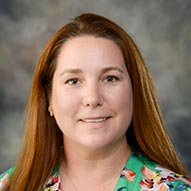Dallas
214-456-7697
Fax: 214-456-7901
Growing pains are normal, and children grow at different rates. But if your child’s growth is clearly different from that of other children the same age or your child has pain or limping that lasts, you should see your child’s doctor. Some of the common orthopedic growth-related disorders, or those related to your child’s skeleton and the structures that support the skeleton, are described below.
Children’s Health℠ offers exceptional care for these and other orthopedic disorders. U.S. New & World Report ranks us as one of the top pediatric orthopedic programs in the United States. The department is also consistently ranked as one of the Top 10 of its kind in the nation by Parents magazine. The orthopedic service is provided by Children’s Health and Texas Scottish Rite Hospital for Children through the University of Texas Southwestern Medical Center at Dallas.
Our physicians also are faculty members of the orthopedic department at UT Southwestern, where they have access to, and participate in, research that is instrumental in developing treatments, therapies and a greater understanding of pediatric orthopedic diseases.
Scoliosis, or sideways curvature of the spine, usually occurs in late childhood or the early teen years. These are years in which children grow rapidly. It affects more girls than boys. Some infants are born with scoliosis, a type called congenital scoliosis, which occurs more often in boys. Many children have no symptoms beyond a slightly leaning appearance, but the condition can cause pain.
Kyphosis is a rounding of the spine. Lordosis is a curvature of the lower spine, often producing a “swayback” appearance. Some infants are born with these spine conditions because their spinal columns did not develop properly in the womb. Kyphosis is more common in girls than in boys, and can be caused by other conditions. Lordosis can be linked to achondroplasia, or dwarfism, and to spondylolisthesis, a condition in which a bone in the spine slips out of position.
Your child might be born with a disorder that affects walking, such as tibial torsion, in which the shin bones and toes turn inward, giving your child a “pigeon-toed” or bowed leg appearance, which might be apparent right away. In femoral anteversion, the thigh bone twists inward, also giving your child a “pigeon-toed” appearance.
Legg-Calvé-Perthes disease, or Perthes disease, is a rare condition in which the blood supply to a child’s hip is temporarily lost. It is more common in boys than girls and in children ages 4 to 10 years old.
Nursemaid’s elbow is a common injury, especially in children younger than 4 years old. This occurs when a child’s forearm bone slips out of the elbow joint.
Slipped capital femoral epiphysis is a slip of the thigh bone from the hip joint, which can be caused by your child’s rapid growth. Some children have a chronic, or long-term, problem with the joint. The condition causes a painful, stiff hip joint.
Osgood-Schlatter disease is caused by a child’s overuse of the knee. It usually affects young teens who participate in sports and causes the tendon below the knee to become inflamed and painful.
Symptoms for growth-related orthopedic disorders vary. Some are caused by an injury or by a teen’s involvement in sports, so you should consider your child’s history of activities when noting problems in gait or complaints of pain. You may notice that your child’s growth or activity differs from that of other children or you may see abrupt changes in your child’s activity, such as favoring an arm or leg. Some growth-related disorders cause inflammation, but often, the symptoms are subtle and only are apparent as you notice that your child is growing in a way that is slightly different from other children the same age.
Take your child to the doctor if you notice the following symptoms:
Your child’s doctor will ask questions about pain and other symptoms and will compare your child’s growth or appearance to that of other children the same age. Doctors often notice congenital growth-related disorders, or those present from birth, during regular physical examinations soon after an infant is born.
Doctors often diagnose scoliosis or kyphosis by having a child bend forward so that the doctor can assess a curve or slope in the child’s spine. If necessary, the doctor will order radiography, or x-ray, examinations to obtain images of your child’s bones and joints. X-rays use invisible electromagnetic energy beams to create images on films or computer monitors. If it’s determined that your child will need surgery, additional imaging might be necessary before or after surgery to carefully plan an operation and to make sure treatment is progressing as expected.
Every child with a growth related orthopedic disorder will not necessarily need all of these tests. In fact, your child may need nothing more than a physical examination. Your physician will explain which tests may be necessary and why, and will let you know what the next steps are.
Children’s Health Orthopedic program is among the top in the nation. If your child is diagnosed with one of these conditions, our specialists have the expertise to work together to provide outstanding care that ensures the best possible outcome for your child.
The cause of most growth-related disorders is unknown. Some are caused by the baby’s position in the womb. Because children’s skeletal systems still are developing, some bones and joints can injure easily.
If your child is born with a growth-related disorder that causes the feet or legs to bow or turn outward, such as femoral anteversion or tibial torsion, your doctor may wait to see if your child outgrows what can be a minor disorder. For tibial torsion, the doctor may provide splints, special shoes and exercises as your child begins to walk. If the problem is still severe after several years, your child might require surgery.
Growth-related disorders from injuries, such as nursemaid’s elbow, may be corrected by your doctor without use of casts or surgery. Pain from Osgood-Schlatter disease can be treated with anti-inflammatory medications and a wrap for the knee. Treatment for other disorders, such as a slipped capital femoral epiphysis, might require surgery and physical therapy (PT).
Exercises and anti-inflammatory medications can help treat pain from kyphosis. If these treatments do not work, or if the curve from kyphosis is severe, your child’s doctor may recommend surgery to straighten your child’s back.
Scoliosis treatment often begins with bracing if parents and doctors notice that a child’s curvature is becoming worse. The bracing only works on children who still are growing. If your child’s curve is more than 45 degrees, your doctor may recommend surgery to correct the curve after your child has finished growing. The surgeon implants rods, hooks or wires to help straighten your child’s spine. Some of your child’s own bone from a graft in the hip area helps to strengthen the area where the surgery occurs.
Our care team is here to support you and help you understand everything you need to know about special exercises, the proper use of splints and other devices, the care of casts, and therapies that will help your child gain strength and improve function. In most cases, children with these disorders will lead normal, active lives.


Nursemaid’s elbow occurs when a child’s arm is pulled, and the forearm slips out of the elbow joint. It is a painful problem for children, but not a serious one. Young children who have nursemaid’s elbow once are at risk for the problem again until about age 5. Parents can prevent the condition by not pulling on their child’s arm, or lifting children up by their arms.
Unless a disorder is severe or attempts to correct the disorder fail, many congenital growth-related disorders can be corrected by the time a child begins walking. Your doctor will recommend addressing the problem as soon as possible, which may mean waiting until your child reaches a certain growth stage for best results.
Most scoliosis in children and adolescents is minor, and the curve in the child’s back causes few to no symptoms. When your child’s doctor measures the curve and it is close to 50 degrees, your doctor may recommend surgery to correct the scoliosis once your child’s skeleton has stopped growing.
Although X-ray examinations, or radiography, use small amounts of radiation to produce images, the amount of radiation is minor. Radiation exposure can put children at risk for cancer later in life if your child has many repeated examinations or radiation therapy, or exposure to higher amounts of radiation as treatment for cancer. Still, it is wise to ask whether the person performing your child’s examination is licensed in your state and is a registered radiologic technologist. You also can inquire about shielding of essential organs, such as your child’s thyroid or reproductive organs.
For more information about growth-related orthopedic disorders, please visit the following sites: